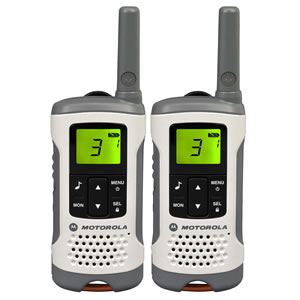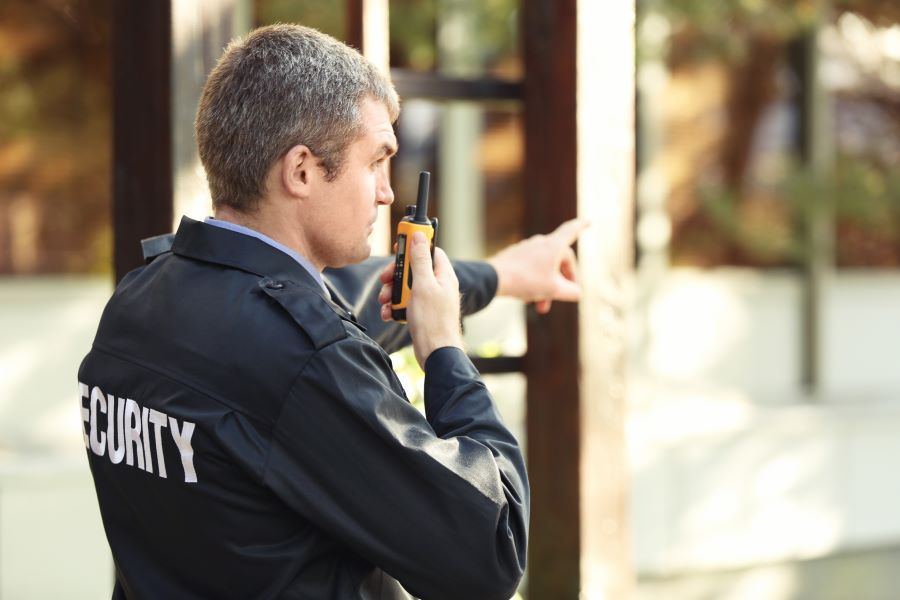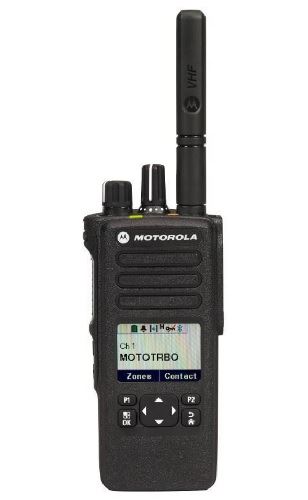Facts About Licence-Free (PMR446) Radios
 10th Feb 2022
10th Feb 2022

 Released On 15th Feb 2022
Released On 15th Feb 2022
Guidance on when you must apply for a ComReg radio in Ireland, the difference between licensed and licence-free radios, types of Comreg licence and costs.
Two-way radio licensing in the UK can be a complex topic. This guide will help you understand:
We've used the terms "two-way radio" and "walkie-talkie" interchangeably throughout this article, but there isn't really any difference, except that the phrase walkie-talkie is commonly used in reference to licence-free business radios.
Unrestricted two-way radio communication could lead to severe interference, particularly disrupting essential services like emergency responders, the military, railways, coastguards, and air traffic control. To prevent this chaos, ComReg regulates Irish radio frequency usage, assigning specific frequencies through various radio licences to meet diverse user needs.
Low-powered walkie-talkies, designed for short-range use on a limited frequency set, are exempt from requiring a ComReg licence. These devices, with a maximum output of 0.5 Watts, operate exclusively on the PMR446 frequency. They are ready-to-use directly out of the box and fulfill the requirements of many users in Ireland.
In very simple terms, most two-way radios, especially those used for business, require a licence from ComReg before you can operate them on most radio frequencies. We've described the most common licences that ComReg issues for business users below. Most licences are easy to apply for, but RadioTrader can help you with your application if needed.
 If your needs are simple, though, you might want to buy a licence-free walkie-talkie. As we've already mentioned, they operate on a strictly limited range of frequencies, but they are easy to use and very affordable.
If your needs are simple, though, you might want to buy a licence-free walkie-talkie. As we've already mentioned, they operate on a strictly limited range of frequencies, but they are easy to use and very affordable.
We've written a whole guide to licence-free radios, describing their advantages and disadvantages, but here's a few key differences between them and licensed radios.
If you use a two-way radio system that does not operate on one of the pre-programmed, licence-free frequencies (within the band 446.0 - 446.2 MHz) approved by ComReg, you'll need a licence. A business walkie-talkie licence in Ireland is regulated and issued by ComReg.

Many businesses choose a licensed two-way radio system because, despite the benefits of licence free radios (PMR 446), they do have some disadvantages (such as lower power, interference and a shorter range) which can make them less suitable than licensed radio systems for some businesses.
Taxi and other transport companies, large sites such as hospitals, manufacturers or factories, care homes or businesses based in more than one location are typical examples of situations where a licensed radio system would be preferable.
Business users need more powerful radios than handheld portable “walkie-talkies” provide. If your radio system relies on a base station or vehicle-mounted radios, a licensed radio system is a must.
 What type of Com Reg licence is best for two-way radio business users?
What type of Com Reg licence is best for two-way radio business users?ComReg issues a variety of licence types for business users. These include:
Fees
Costs are based on the quantity of equipment, at €22 per item, plus a fixed charge of €22 for the duration of the licence. As an example, four walkie-talkies plus two mics = 6 units, plus one fixed charge gives a total cost of €154.
A community repeater system is comprised of a base station (usually located in a remost location such as a mountain-top to provide wide-area two-way communication), trigger stations and mobiles. Community repeater systems are often provided by equipment suppliers to many customers on a channel sharing basis.
This type of ComReg licence covers all elements of the community repeater system including the mobiles, thereby eliminating the requirement for customers to hold individual radio licences. All radio stations on the system are covered by the operator’s licence.
Fees
Costs for the first year are €625 plus a processing fee of €12. In subsequent years, annual renewal costs €1,000.
Paging sends a one-way digital coded signal to a receiver. The signal can be as simple as a bleep, or more complex such a numeric or text message. Pages offers good coverage and good signal strength for penetrating solid structures such as buildings.
Fees
Free!
Trunked radio networks allow better utilisation of limited frequencies by a larger group of users. Simply put, any user can access a pool of channels rather than being assigned a specific channel. This type of licence is most likely to be bought by large organisations such as emegency services, utilities and transport operators.
Fees
First year: €625 per channel (12.5kHz) per base.
Subsequent Years: €1,000 per channel (12.5kHz) per base for the annual renewal of the licence.
The Third Party Business Radio (TPBR) licence allows licensees (such as RadioTrader) to provide business radio services to third parties nationally for a 5-year period, without the need for individual licensing of business radio operations for each specific geographic site or by each third-party user.
This streamlines the whole licensing process for business users, and offers a simple and affordable way to have the proper licensing in place.
Fees
RadioTrader pays ComReg €5,000 per channel for a 5-year TPBR licence. We then charge customers a modest fee to be covered under our licence. Read this article about our TPBR Licensing Scheme for more information, or get in touch with our team.

Apart from the TPBR licence mention above, all applications for two-way radio licences are made via ComReg. Your application can be made online from their website in most cases.
If all this sounds rather complex, don't panic! RadioTrader is happy to help customers with their application.
Get in touch for expert help - Call 1800 936374
 10th Feb 2022
10th Feb 2022
 13th Jan 2022
13th Jan 2022
Stay up to date with the lastest from RadioTrader